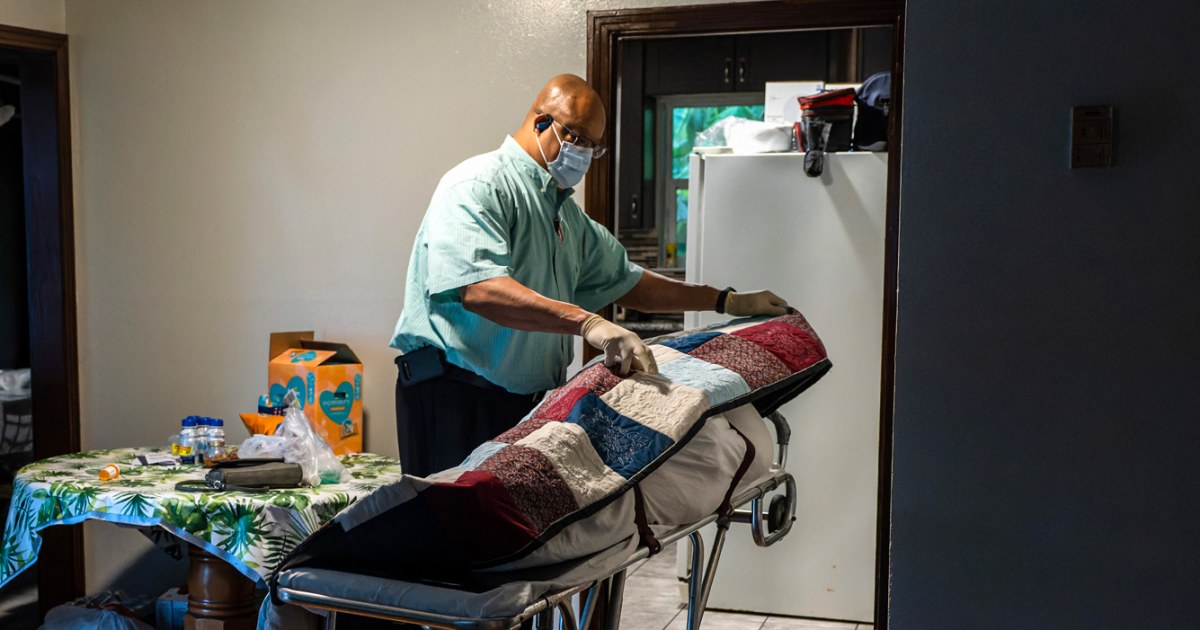WASHINGTON — Many of the deaths and much of the economic damage from the Covid pandemic could have been prevented, particularly in the early months of the coronavirus’s spread, had the federal government been better prepared after decades of warnings, the Senate Homeland Security and Governmental Affairs Committee said in a report Thursday.
The 242-page report, written by Democrats on the panel, cited long-term weaknesses in the country’s public health infrastructure, from staffing shortages and inadequate disease surveillance to poor testing systems. Those factors, combined with the Trump administration’s failure to adequately stock up on personal protective equipment and provide accurate information to the public, were the main contributors to preventable Covid deaths and economic damage, the report said.
“The loss of life, the damage to the health and livelihoods of countless Americans and the suffering that was caused by the pandemic were not inevitable. We could have handled the situation a whole lot differently,” committee Chairman Gary Peters, D-Mich., said on a call with reporters.
The findings were drawn in part from new interviews with Trump administration officials involved in the initial response, including Dr. Robert Redfield, who was the director of the Centers for Disease Control and Prevention; former Health and Human Services Secretary Alex Azar; and Dr. Deborah Birx, the coordinator of the Trump White House Coronavirus Task Force.
But the report indicated that the pandemic shortcomings extended beyond the Trump administration.
“Despite repeated warnings, systemic inadequacies in public health surveillance systems, years of insufficient funding, over dependence on foreign supply chains, and growing medical and public health staffing shortages, all contributed to what has become one of the worst public health responses in U.S. history,” the report said.
China withheld vital information in the early days of its initial outbreak; U.S. officials, by contrast, had early warning signs and were slow to react, failing to quickly detect the virus’s spread in the U.S. The CDC missed at least half of the cases that came into the country in January and February 2020.
The federal government publicly confirmed the country’s first case on Jan. 21, 2020, but blood samples later showed the virus had been circulating in the U.S. a month earlier, the committee report said.
In some cases, health departments were transcribing information by hand and faxing data, delaying information-sharing about how the coronavirus was spreading. The CDC also struggled for months to develop an effective test to detect the virus, with the committee finding conflicting internal accounts about what went wrong.
In January and February, as the virus began to spread more widely, the only available test had to be run out of CDC labs in Atlanta, which took days to return results. By the end of February, when tens of thousands of people had most likely been infected in the U.S., the CDC had tested fewer than 1,200, the report said.
The U.S. was also hampered by a lack of domestic medical manufacturing for items like surgical masks, gowns and gloves — 80% of which were made overseas — and had insufficient supplies in the federal stockpile, the committee said.
Making matters worse, according to the committee, was the Trump administration’s decision in February 2020 to ship 17.8 tons of personal protective equipment to China, after the Department of Health and Human Services determined that there were “no known immediate problems with medical supply chains.”
The committee found that other parts of the federal government were raising warnings at the time about the weakness of the medical supply chain and the lack of necessary supplies. The report cited a Feb. 7, 2020, State Department memorandum saying a large manufacturer of personal protective equipment would be able to produce only 10% of its hazmat and surgical gown inventory because of a shortage in fabric from China. Similarly, a DHS report said 96% of pharmacy owners and managers were already reporting a shortage of surgical masks, according to the report.
The federal government was also slow to distribute its supplies from the national stockpile, and it allocated items to states based on population instead of demonstrated needs, the report said. As a result, New Jersey received less than 5% of the N95 respirators it requested, while Wyoming got more than 1,000% more than it had requested.
The early missteps inadequately protected health care workers and exposed them to the virus, in some cases resulting in deaths.
Trump administration officials also failed to adequately communicate the risks to the public and limited the CDC’s communications after the agency strongly warned the public on Feb. 25, 2020, that the virus would severely disrupt their lives.
After that, the White House began requiring approval of all telebriefings, media requests and guidance documents, “resulting in lengthy delays of critical health guidance and restricting CDC’s ability to share information directly with the public,” as it “wasn’t allowed to hold public briefings,” the report said.
The country’s overall pandemic planning, combined with many of the structural flaws, is still insufficient to address future threats, the committee said. It issued a variety of recommendations, including increasing funding to improve public health surveillance, data systems, health care surge capacity, domestic manufacturing capabilities and stockpiles of critical supplies.
Other recommendations included clarifying agencies’ roles, improving interagency communication, changing the structure of the Department of Health and Human Services, overhauling the strategic stockpile and improving domestic manufacturing capabilities.
While some of the changes can be made by the White House and at the agency level, many will require additional funding from Congress, which has failed to pass funding legislation that would address some of the concerns raised in the report.
“This is not the first public health crisis that our nation has faced, and sadly, it won’t be the last,” Peters said.
Share your story or advertise with us: Whatsapp: +2347068606071 Email: info@newspotng.com












